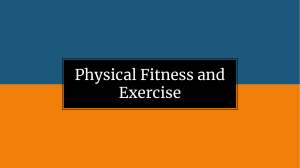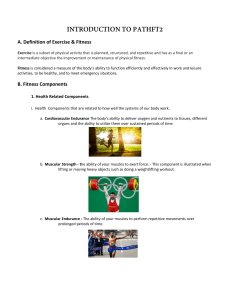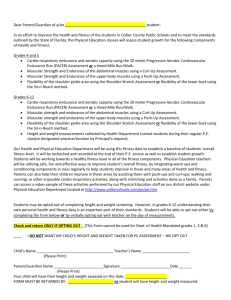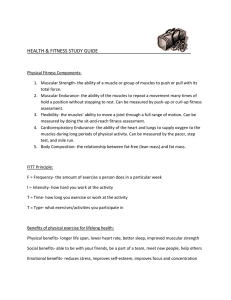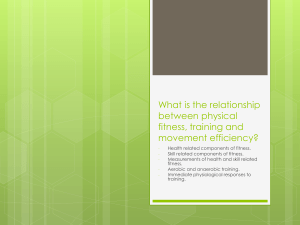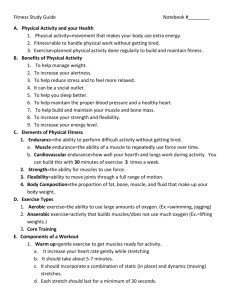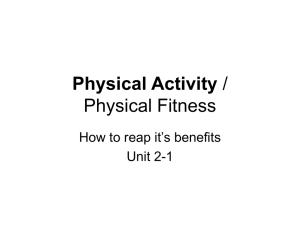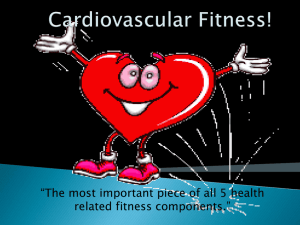PHYSICAL FITNESS – Study Guide PHYSICAL EDUCATION
advertisement
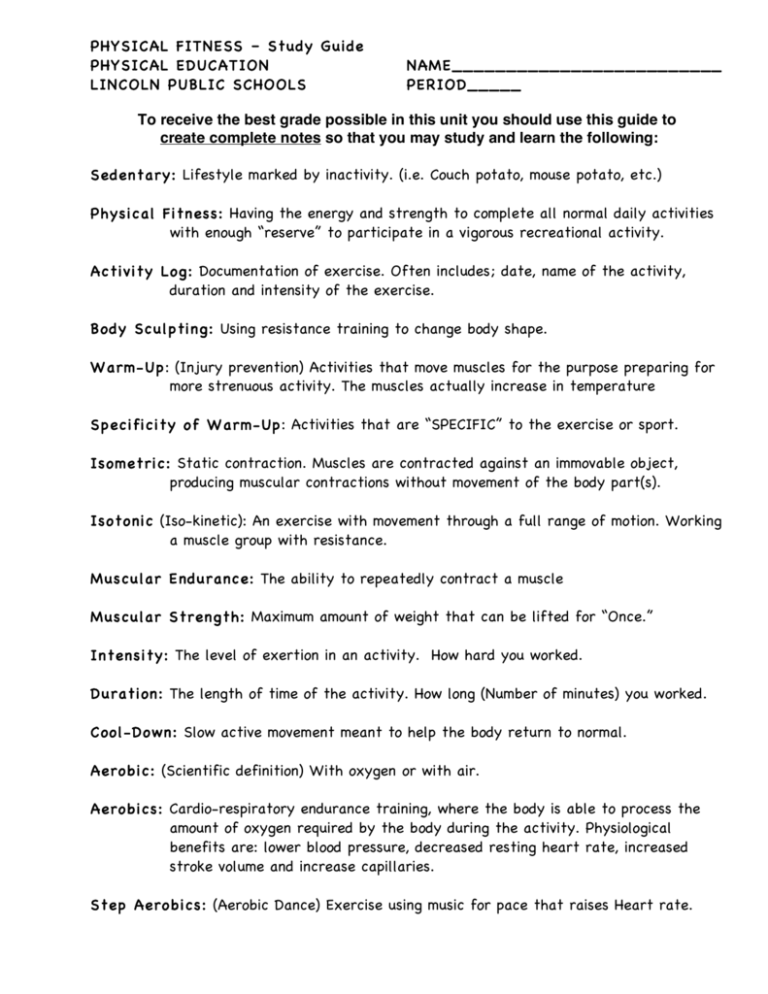
PHYSICAL FITNESS – Study Guide PHYSICAL EDUCATION LINCOLN PUBLIC SCHOOLS NAME_________________________ PERIOD_____ To receive the best grade possible in this unit you should use this guide to create complete notes so that you may study and learn the following: Sedentary: Lifestyle marked by inactivity. (i.e. Couch potato, mouse potato, etc.) Physical Fitness: Having the energy and strength to complete all normal daily activities with enough “reserve” to participate in a vigorous recreational activity. Activity Log: Documentation of exercise. Often includes; date, name of the activity, duration and intensity of the exercise. Body Sculpting: Using resistance training to change body shape. Warm-Up: (Injury prevention) Activities that move muscles for the purpose preparing for more strenuous activity. The muscles actually increase in temperature Specificity of Warm-Up: Activities that are “SPECIFIC” to the exercise or sport. Isometric: Static contraction. Muscles are contracted against an immovable object, producing muscular contractions without movement of the body part(s). Isotonic (Iso-kinetic): An exercise with movement through a full range of motion. Working a muscle group with resistance. Muscular Endurance: The ability to repeatedly contract a muscle Muscular Strength: Maximum amount of weight that can be lifted for “Once.” Intensity: The level of exertion in an activity. How hard you worked. Duration: The length of time of the activity. How long (Number of minutes) you worked. Cool-Down: Slow active movement meant to help the body return to normal. Aerobic: (Scientific definition) With oxygen or with air. Aerobics: Cardio-respiratory endurance training, where the body is able to process the amount of oxygen required by the body during the activity. Physiological benefits are: lower blood pressure, decreased resting heart rate, increased stroke volume and increase capillaries. Step Aerobics: (Aerobic Dance) Exercise using music for pace that raises Heart rate. PHY.FIT–Study Guide Page 2 Anaerobic: (Scientific definition) Without oxygen. Anaerobic Exercise: An intense activity or exercise where the body requires more O2 than can be processed by the cardiovascular system (heart and lungs). A longer time period is needed for the body to return to normal. Resistance Training: Force or resistance applied to muscles for the purpose of improving muscular strength and endurance. The actual resistance used may be from several sources: Gravity, weights (dumbbells, etc.), medicine balls, stretchable latex bands or cords. Plyometrics: Type of exercise training designed to produce fast, powerful movements. Plyometric training exercises use various apparatus including plyometric (medicine) balls. Body Mass Index (BMI): A ratio of height to weight used by physicians to determine an approximate ideal weight. Core Strength: The type of strength involving the muscles of the abdomen and lower back. Yoga: An ancient practice of body positions to improve posture, balance, and breathing. Meant to the connect mind and body. Posture: Sitting or standing upright with the head, spine, shoulders and hips aligned. Flexibility: Being able to move a body part through a full range of motion. Stability: The biomechanical principle that allows for the improvement of balance. Balance: an even distribution of weight enabling someone or something to remain upright and steady Relaxation: Techniques that may be used to reduce stress tension and anxiety. Kick Boxing: An aerobic activity inspired by martial arts designed to improve balance, and core strength. Pilates: Developed in the early 20th century (by Joseph Pilates) and practiced to improve core strength. FITNESSGRAM ® : A test that measures the “Healthy Fitness Zone” of individuals. The measure of over-all physical fitness used in this class.
